| An
experiment to study subcooled pool boiling of FC-72 was flown on the maiden
flight of the Terrier-Improved Orion sounding rocket on December 17, 1999,
which provided about 200 s of microgravity time. The rocket was
launched from NASA’s Wallops Flight Facility in Chincoteaque, VA.
It reached an altitude of 168 km, and landed about 70 km out into the
Atlantic Ocean. Post test analysis indicated that the payload experienced
accelerations of less than 1E-6, the quietest microgravity environment
of any platform tested to date.
Links
to pictures of the test rig and a QTVR are given below.
| The
payload that was designed, built, and tested at UMD to study boiling
heat transfer between January and September, 1999. |
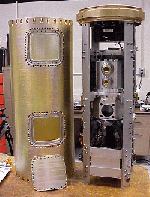
224
KB |
| A
QuickTime Virtual Reality (QTVR) file of the test section allowing
you to see it from all angles. |
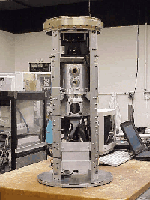
2.4
MB |
| Components
of payload before assembly. From left-to-right are the Rate control
system (used to orient and stabilize the rocket once in space), the
boiling payload, the SAMS fiber optic accelerometer and gyroscopes,
and the telemetry unit. |
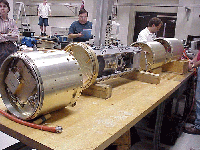
256
KB |
| Video
taken during vibration testing of the payload. The payload is placed
on a vibration table and a sine sweep from 20 Hz to 2000 Hz is performed
at an amplitude of 10 g at the base of the payload to simuate a rocket
launch. |
MPEG
Movie
(1.2
MB) |
| An
explanation of how the rocket is guided. |
WAV
file
604
KB |
| The
morning of the launch. The rocket is mounted on a launch rail. When
ready to launch, the building moves away uncovering the rocket, which
is then raised to the desired elevation and azimuth. The payload was
powered by two rocket motors. |
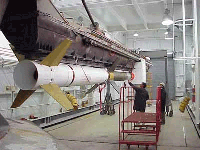
92
KB |
| Recovery
of the payload by the US Coast Guard. |
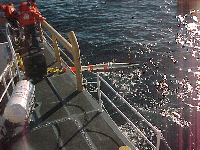
252
KB |
|

|
![]()